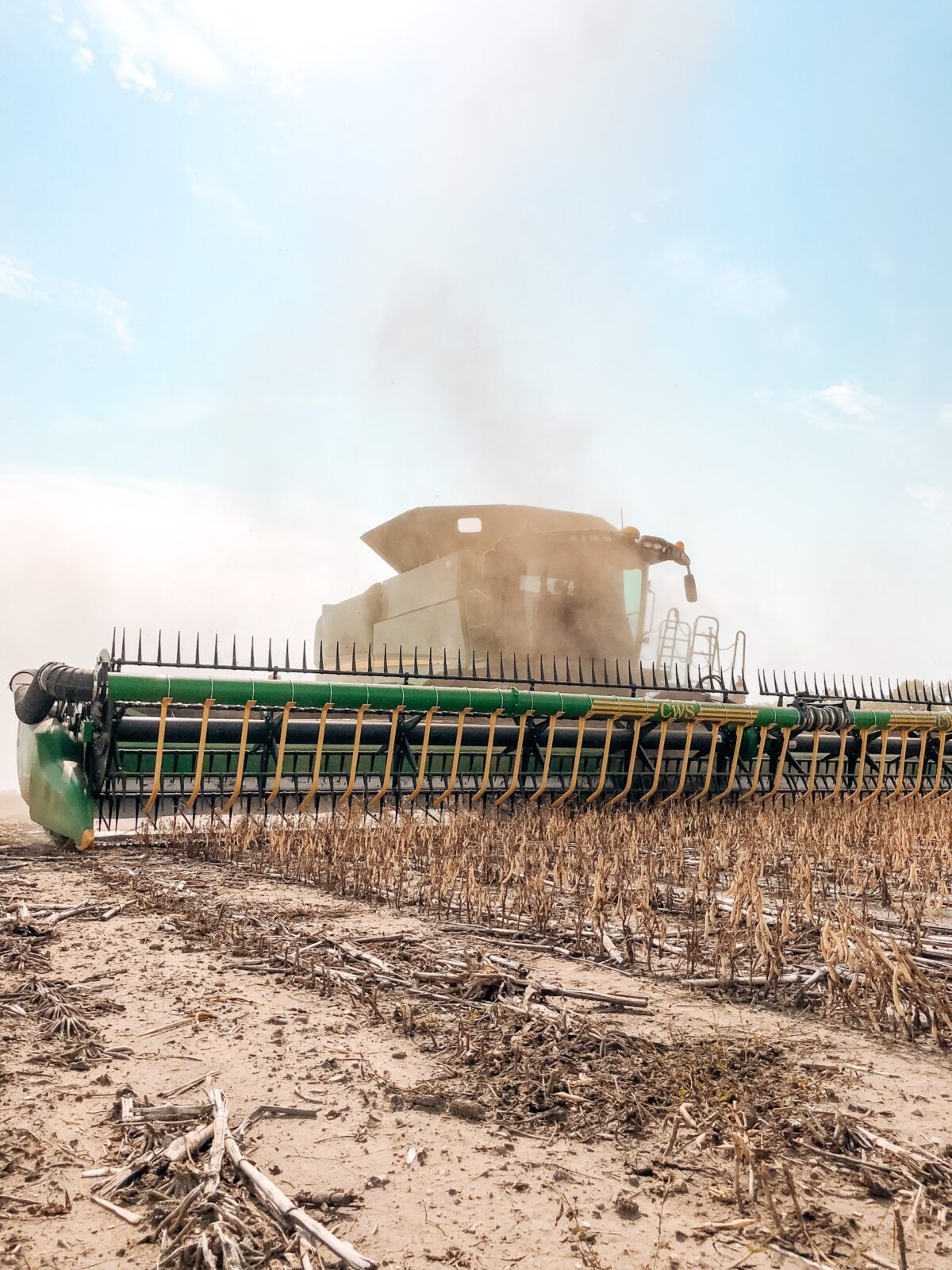
Our operation has more than two crops in the rotation which means choices to make for what we will plant next year rather than alternating.

Agronomic Considerations
The plan is always a work in progress. Something that we keep at the back of our minds as we go through the year; evaluating many factors and considering a multitude of options.
I’ve learned from previous generations that my first consideration is what does the land need? Would it be beneficial to take a section out of crop production and put it into perennial hay for a few years? Where are our organic matter levels? Do we have weeds that need a different mode of action to be kept under better control?
Adding to the long list of benefits on why cattle and crops go hand in hand is our opportunity to take saline or compacted areas of a field and plant a perennial hay crop. We’ve added alfalfa strips on the edges of fields and seen the benefit two-fold; quality forage for the cattle and revitalizing soil that was not producing anything when planted with a crop. Once the alfalfa has lived it’s lifetime we are able to crop the field as we were before and see growth from the planted crop!
Fields that are too far away to economically apply manure or ground that has not seen as much organic matter is higher on the list to be planted to corn. Leaving the corn residue in the field, even partially if we make bales, will see results over time.
Managing weeds is an effort that requires a multi-faceted approach. We utilize all of our resources including chemicals, tillage, and crop rotation. This effort is part of the reason our crop rotation continues to include a small grain crop.
Financial Considerations
After the health of the land has been considered, I go to running the numbers on the fields that have an option for a crop. I trialed an incredibly powerful program that considers overhead, often overlooked costs, and even additional wear and tear on machinery for high volume crops such as corn.
But for now, I’m not there yet.
For now, I’m simply running straight forward numbers. Which crop gives me the highest number after the price of grain multiplied by the yield goal minus the cost of inputs? An Excel sheet with formulas makes it quick to try different crops on different fields, especially with the legend at the bottom.
Simple.

I run the numbers per field so I can account for rent versus a land payment + taxes, as well as my varying yield goals. It’s fascinating to see the difference in crops and how much of a difference a change of 10% to either the sales price or the yield goal can make.
Moving forward, I’ll get to the fancy program again someday because there are projections that are simple to run to see possible sales at different levels.
Last week, I read comments from someone I consider significantly successful in the grain marketing world. I’ll be paraphrasing because I didn’t write his statements down, but he said something along the lines of, “If you choose a target price for sales for the year, you should have some knowledge of how you picked the number. It shouldn’t be random.”
With that said, that’s on my list too. Furthering my understanding and ability to select an educated average sales price for the year.

Where are you at with your crop planning? Has it evolved into an incredibly involved process or continues to live in your head along with a few pieces of scratch paper?
If you have any words of wisdom or thoughts to share, I’m always open to hearing them!